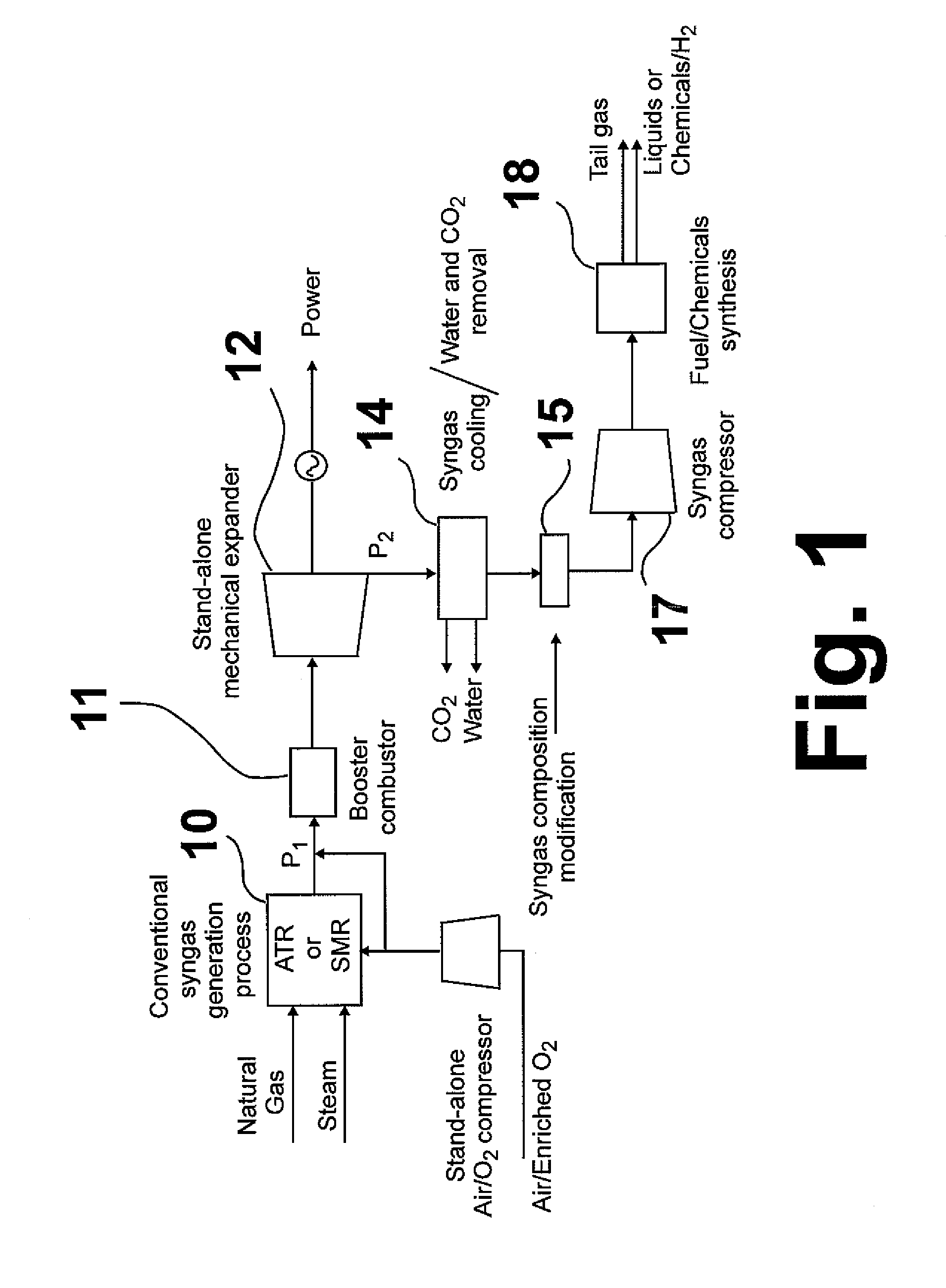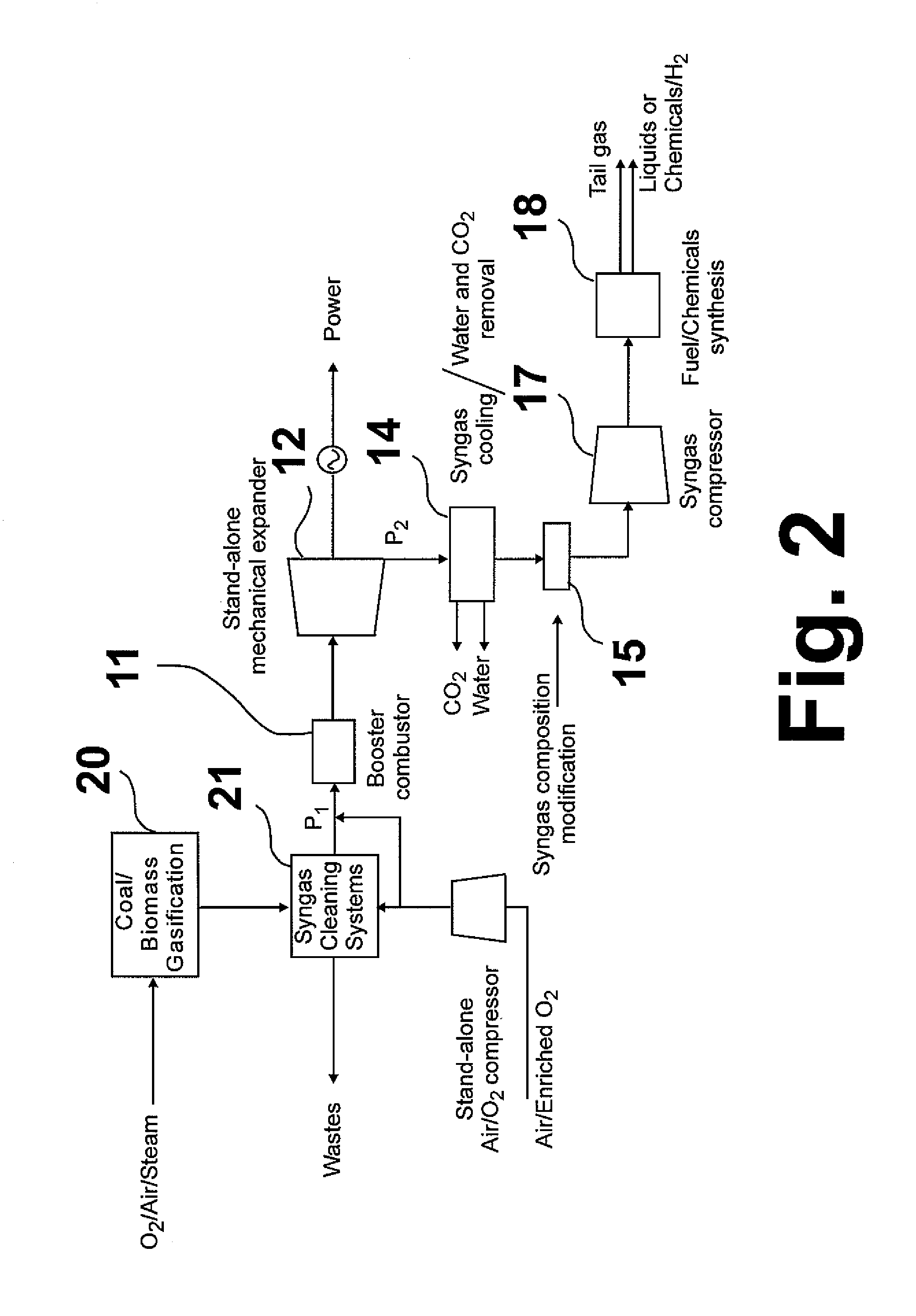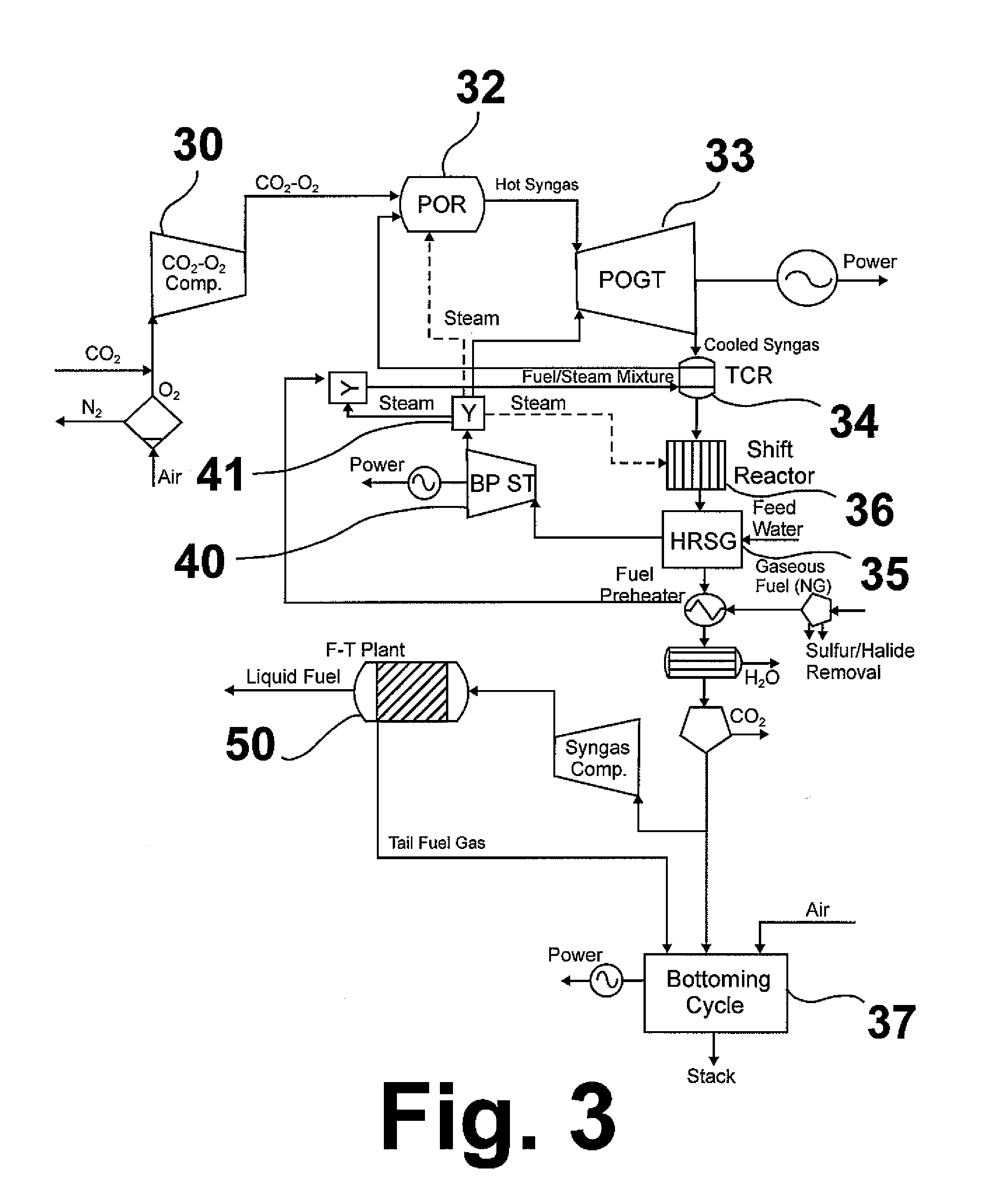Co-production of fuels, chemicals and electric power using gas turbines
a gas turbine and co-production technology, applied in the direction of machines/engines, mechanical equipment, sustainable manufacturing/processing, etc., can solve the problems of difficult effective power generation, significant portion of fuel energy input to gas turbines, and difficulty in generating syngas. , to achieve the effect of high back pressure, high back pressure and high back pressur
- Summary
- Abstract
- Description
- Claims
- Application Information
AI Technical Summary
Benefits of technology
Problems solved by technology
Method used
Image
Examples
Embodiment Construction
[0020]The invention claimed herein is a method and system for co-producing fuels, chemicals, and electric power in which pressurized synthesis gas at a first pressure is expanded using a stand-alone mechanical expander or partial oxidation gas turbine, simultaneously producing electric power and an expanded synthesis gas at a second pressure which is converted to a fuel and / or a chemical. The synthesis gas, typically comprising substantial amounts of H2 and CO, may be produced by any means known to those skilled in the art including gasification of carbonaceous materials such as coal and biomass, steam reforming (FIG. 7) or autothermal reforming (ATR) (FIG. 8) of natural gas or other process streams containing significant amounts of methane, ethane, propane, butane and related C2—C4 olefinic hydrocarbons, partial oxidation, and catalytic partial oxidation. Various oxidants and oxygen carriers including oxygen-enriched air, oxygen, air, CO2, steam, and mixtures thereof may be employe...
PUM
| Property | Measurement | Unit |
|---|---|---|
| Pressure | aaaaa | aaaaa |
| Pressure | aaaaa | aaaaa |
| Pressure | aaaaa | aaaaa |
Abstract
Description
Claims
Application Information
 Login to View More
Login to View More - Generate Ideas
- Intellectual Property
- Life Sciences
- Materials
- Tech Scout
- Unparalleled Data Quality
- Higher Quality Content
- 60% Fewer Hallucinations
Browse by: Latest US Patents, China's latest patents, Technical Efficacy Thesaurus, Application Domain, Technology Topic, Popular Technical Reports.
© 2025 PatSnap. All rights reserved.Legal|Privacy policy|Modern Slavery Act Transparency Statement|Sitemap|About US| Contact US: help@patsnap.com



